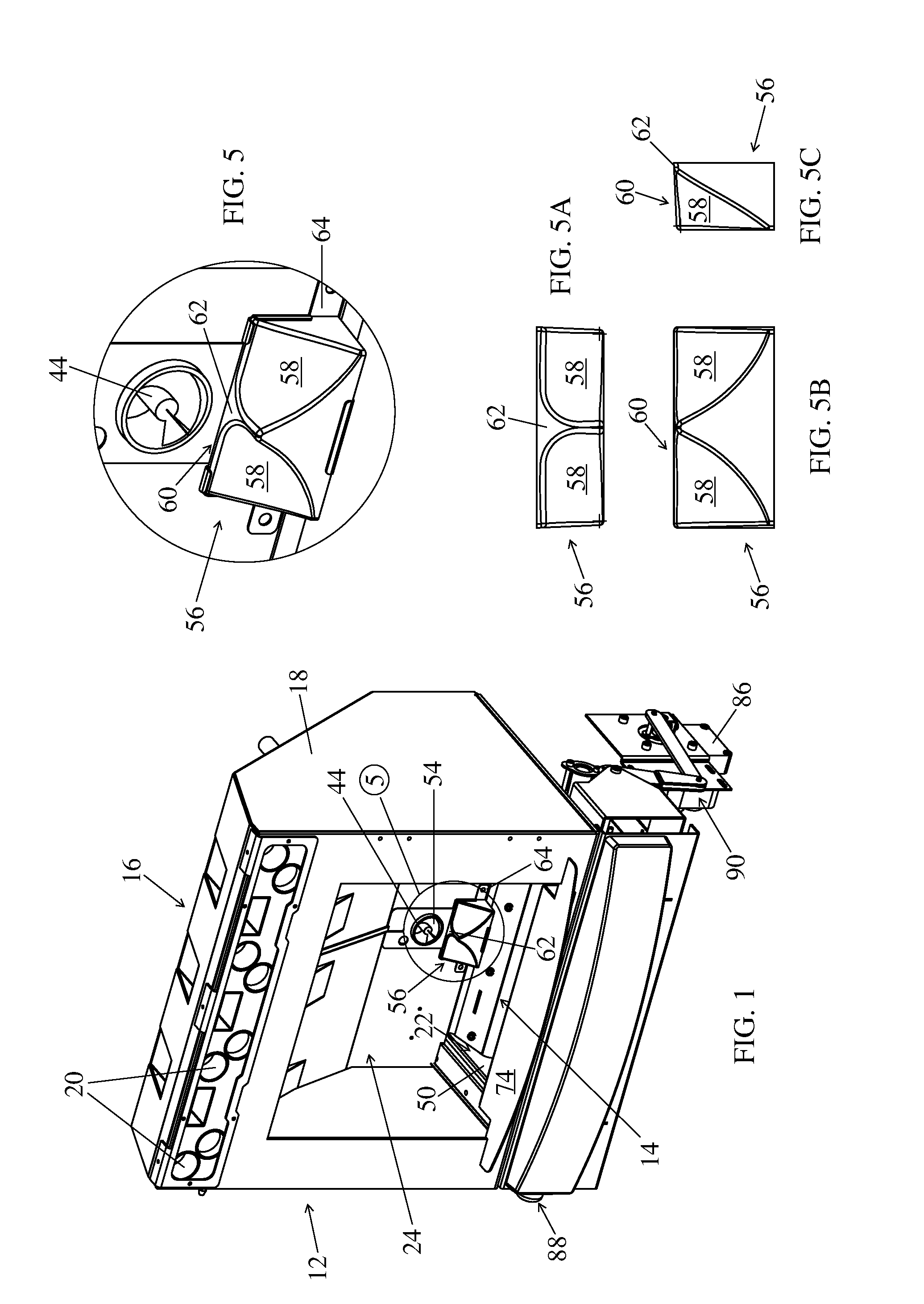Apparatus for combustion of biofuels
a biofuel and apparatus technology, applied in the direction of lighting and heating apparatus, combustion of solid fuels, combustion types, etc., to achieve the effects of enhancing functionality and performance, avoiding excess smoking, and reducing processing costs
- Summary
- Abstract
- Description
- Claims
- Application Information
AI Technical Summary
Benefits of technology
Problems solved by technology
Method used
Image
Examples
Embodiment Construction
[0041]The subject combustion device, per se and in combination with other elements or features of a heating appliance or the like, is generally depicted in FIGS. 1-4, &6, more particularly, FIGS. 1-4 are generally directed to components of a heating appliance while FIG. 6 is specifically directed to a first combustion chamber assembly embodiment, an alternate, further combustion chamber assembly embodiment depicted in FIG. 11. The remaining figures, namely FIGS. 5&7-10, on the one hand, and FIGS. 12-14 on the other hand, depict advantageous features of contemplated appliance assemblies, and / or subassemblies of the subject invention, namely those associated with the combustion assembly of FIG. 6 or FIG. 11, respectively.
[0042]While the device of the subject invention, more particularly, the biomass fuel burner is especially well suited for inclusion in a residential or commercial heating appliance, e.g., a stove, it need not be so limited in utility. Contemplated applications for the...
PUM
 Login to View More
Login to View More Abstract
Description
Claims
Application Information
 Login to View More
Login to View More - R&D
- Intellectual Property
- Life Sciences
- Materials
- Tech Scout
- Unparalleled Data Quality
- Higher Quality Content
- 60% Fewer Hallucinations
Browse by: Latest US Patents, China's latest patents, Technical Efficacy Thesaurus, Application Domain, Technology Topic, Popular Technical Reports.
© 2025 PatSnap. All rights reserved.Legal|Privacy policy|Modern Slavery Act Transparency Statement|Sitemap|About US| Contact US: help@patsnap.com



